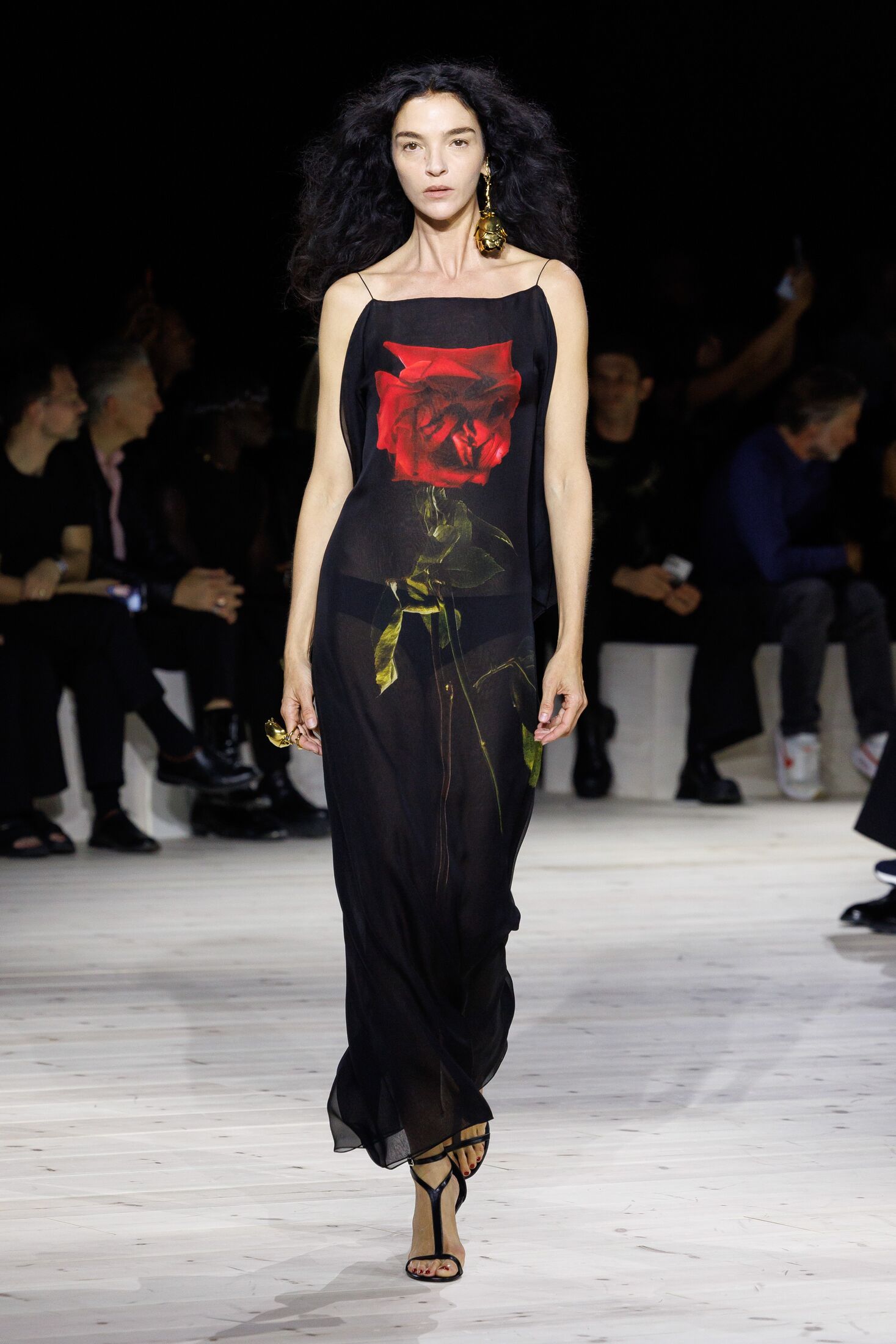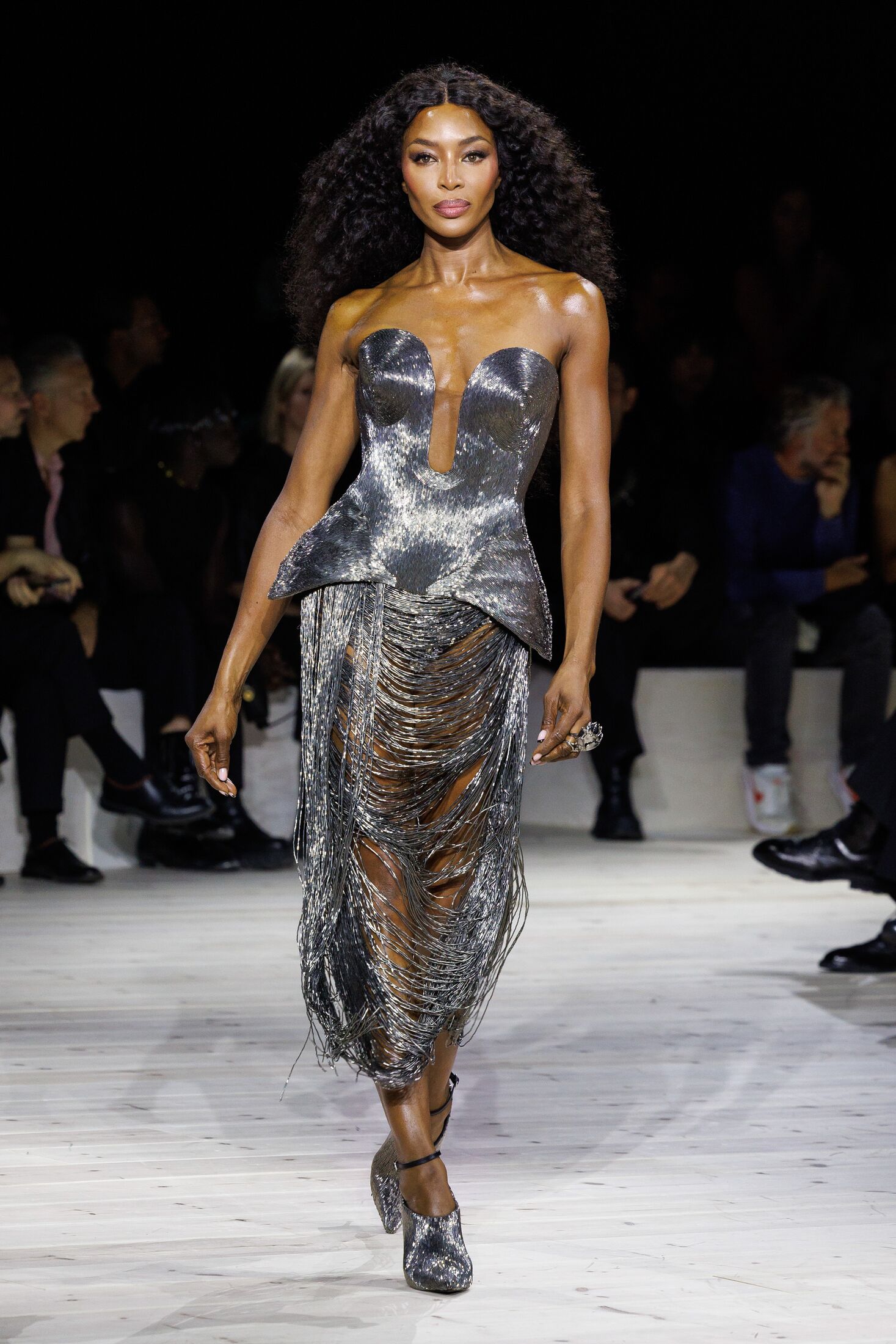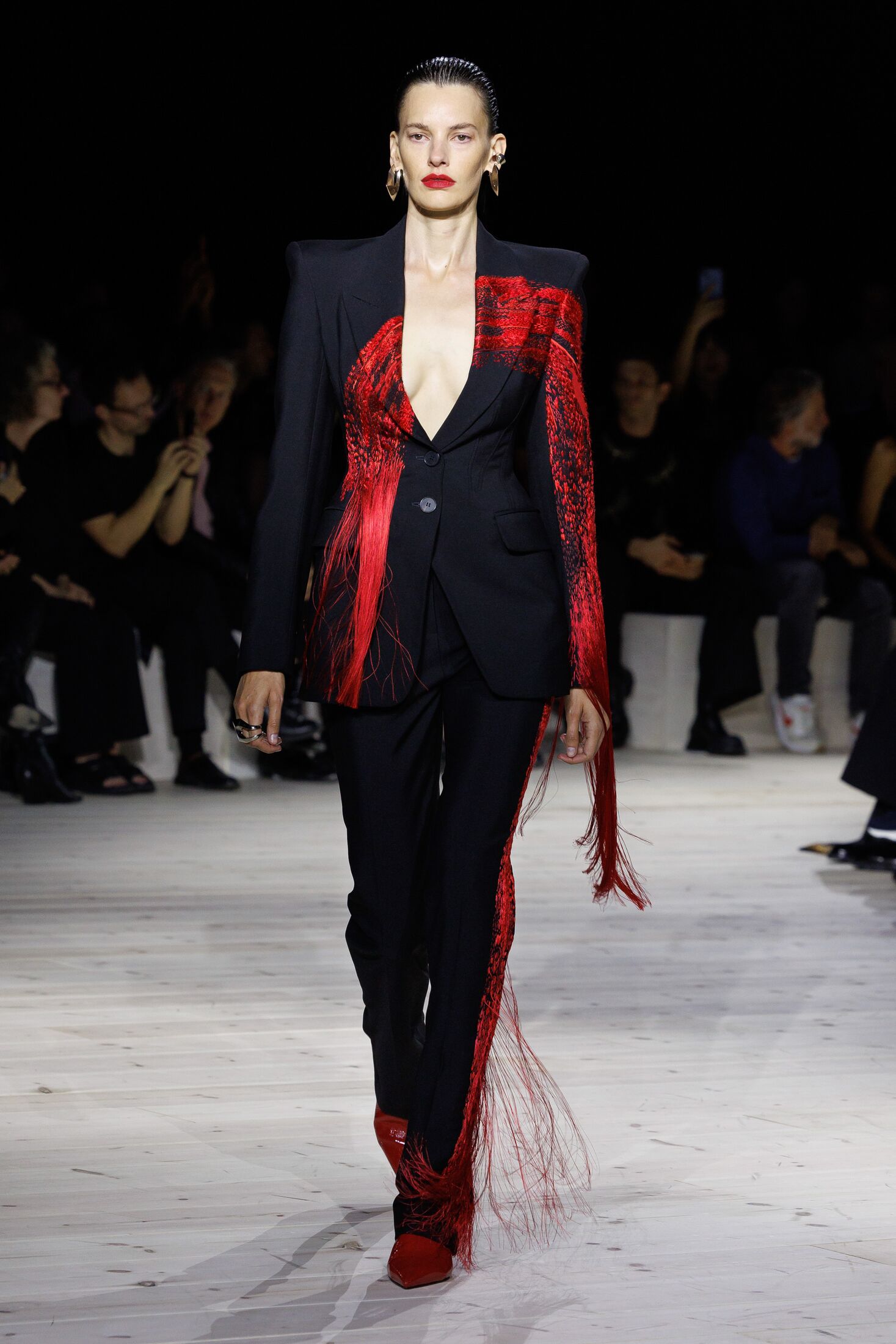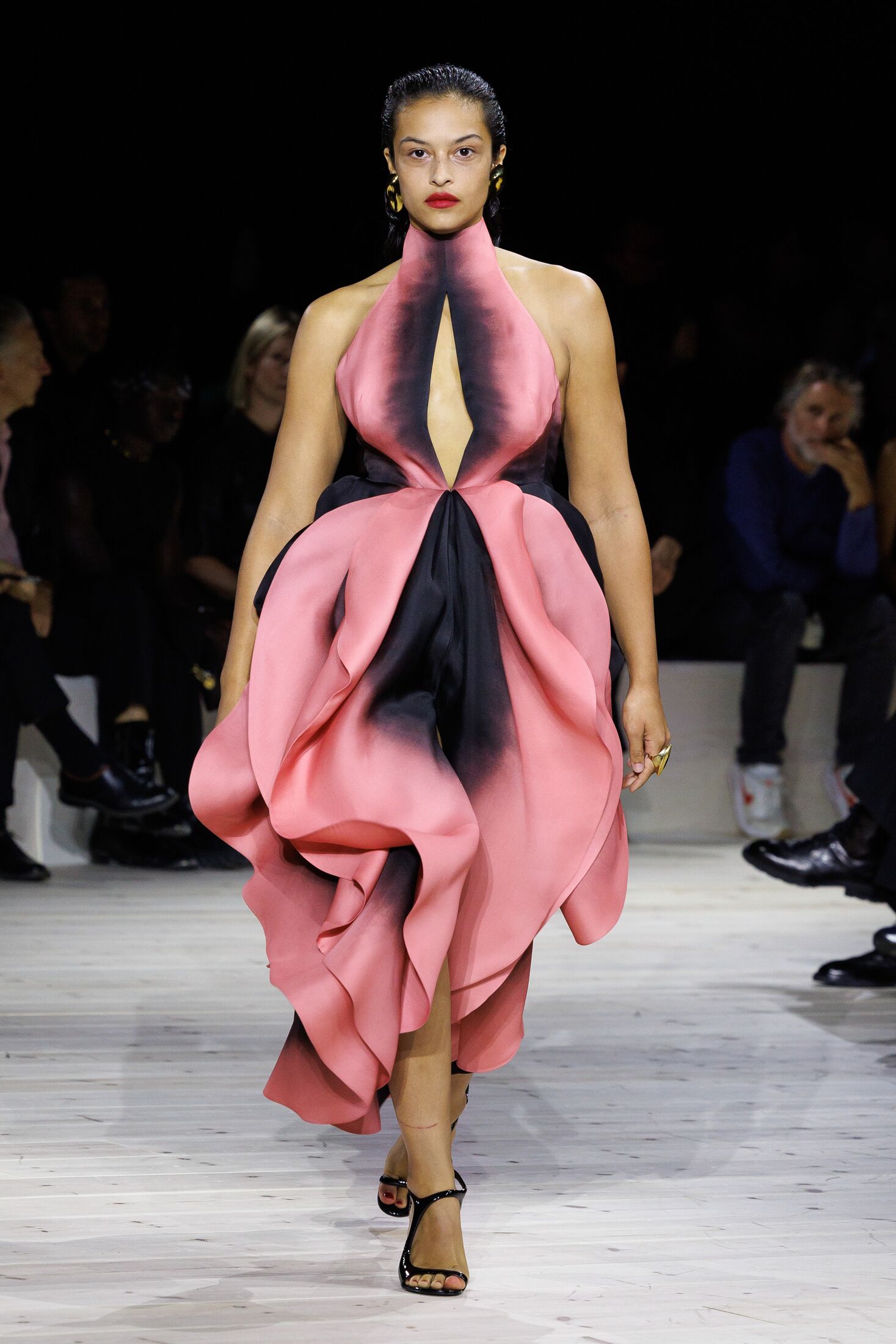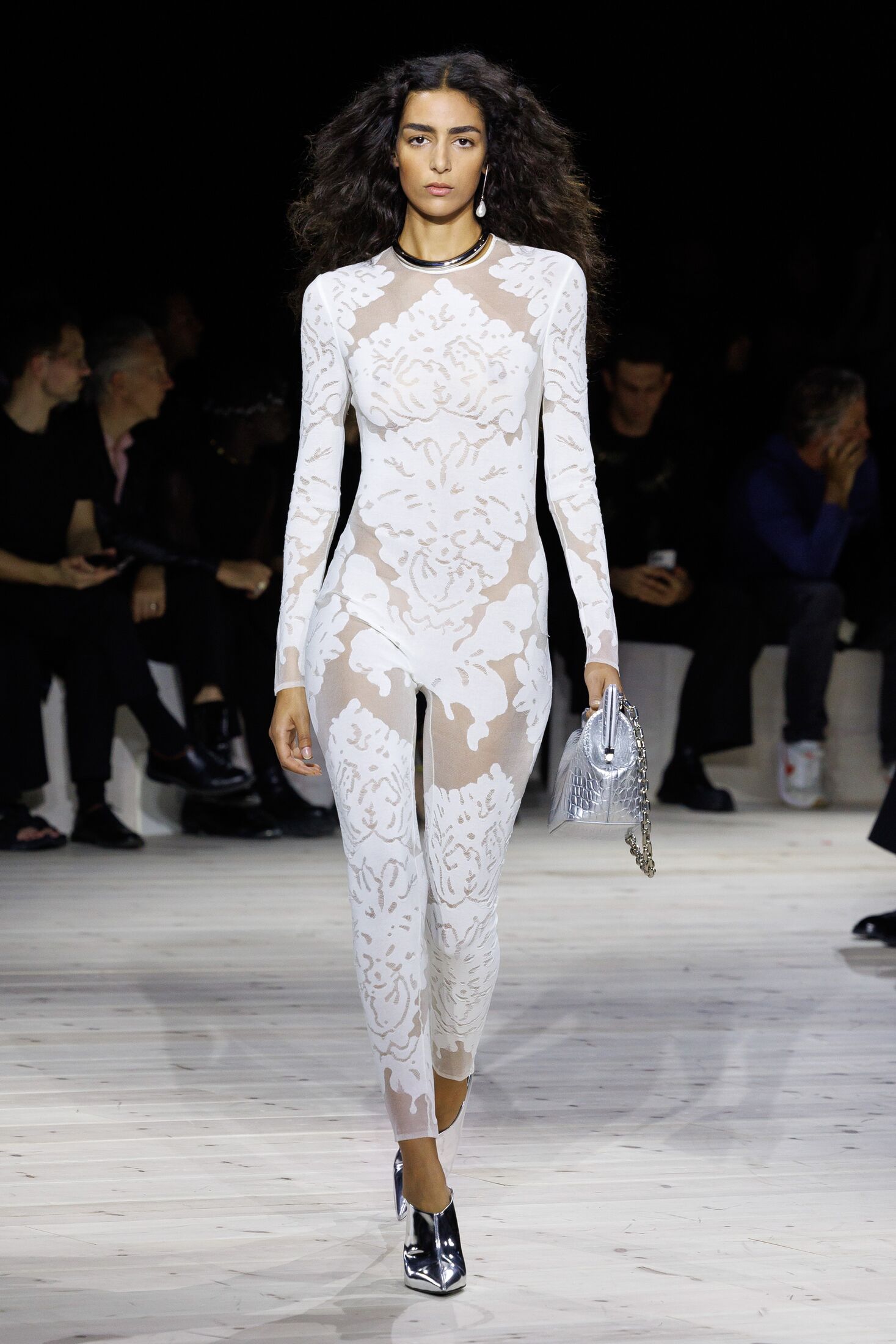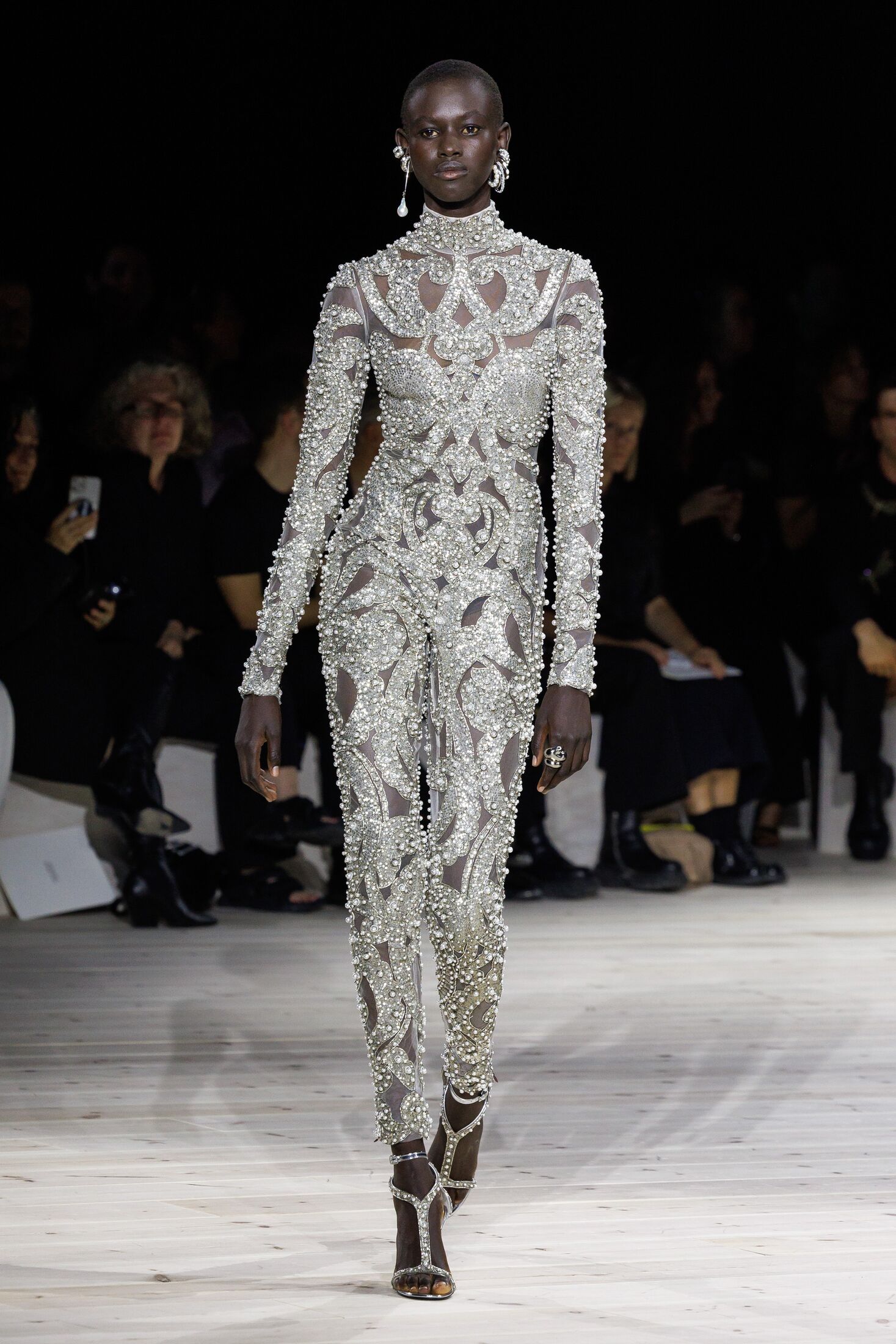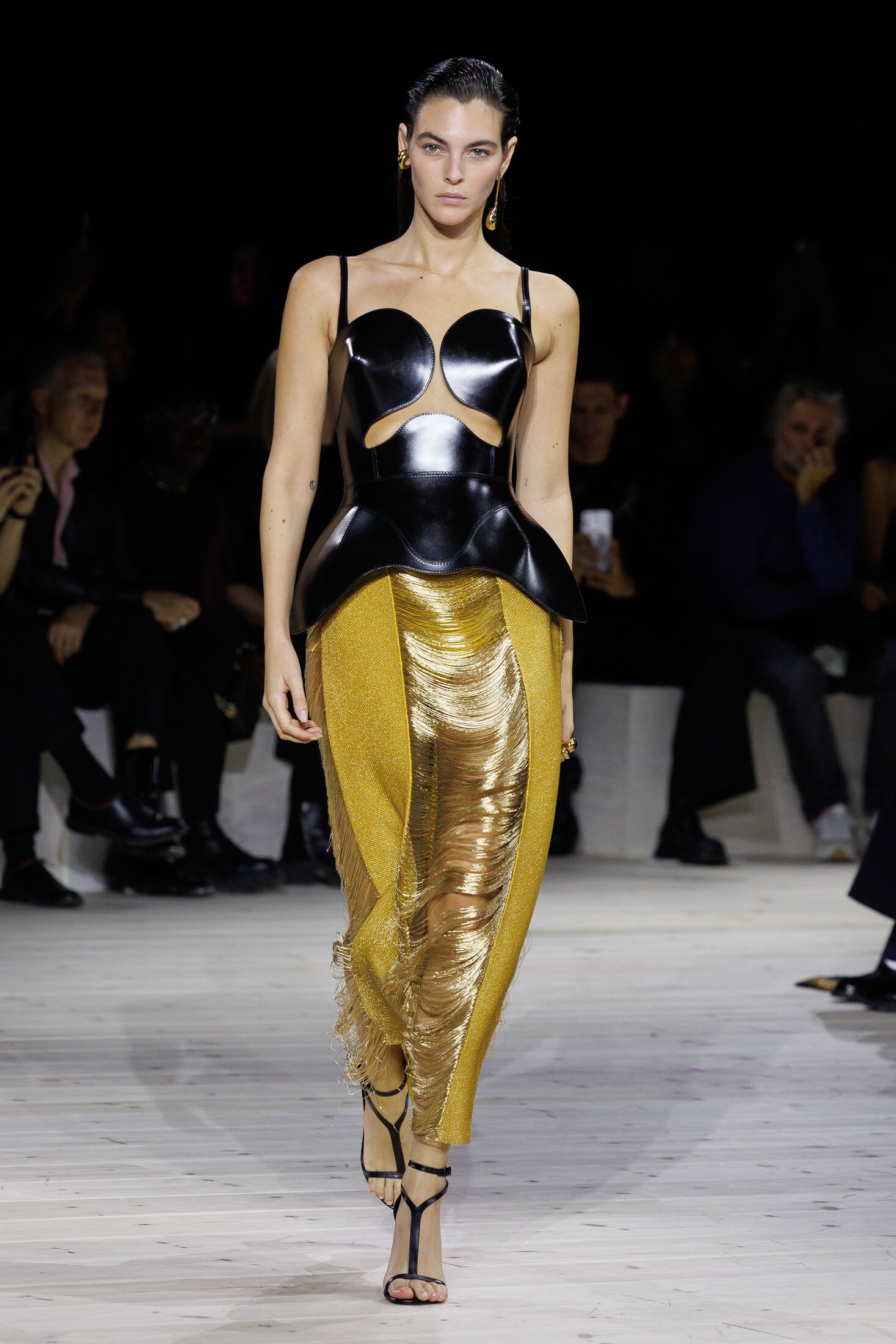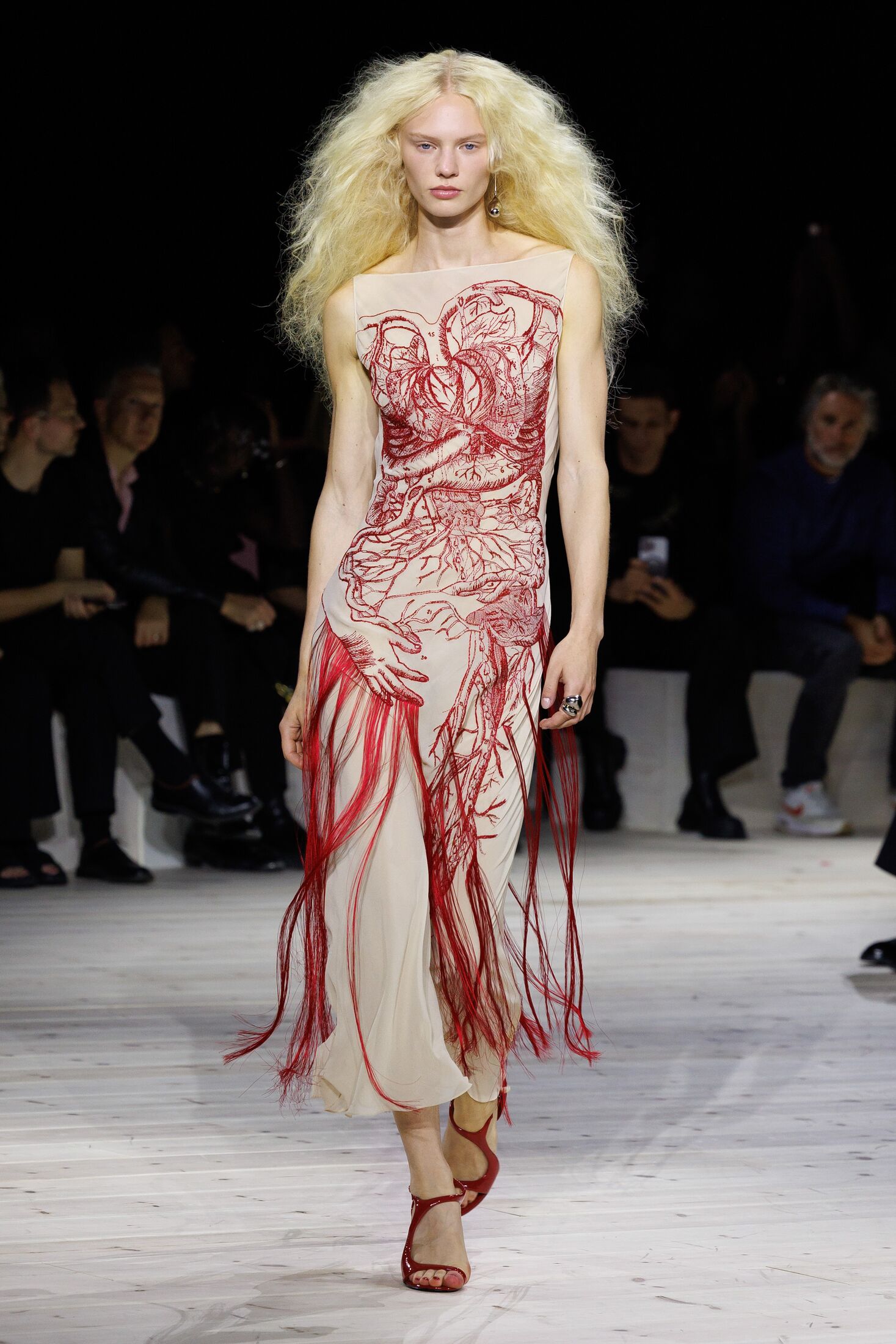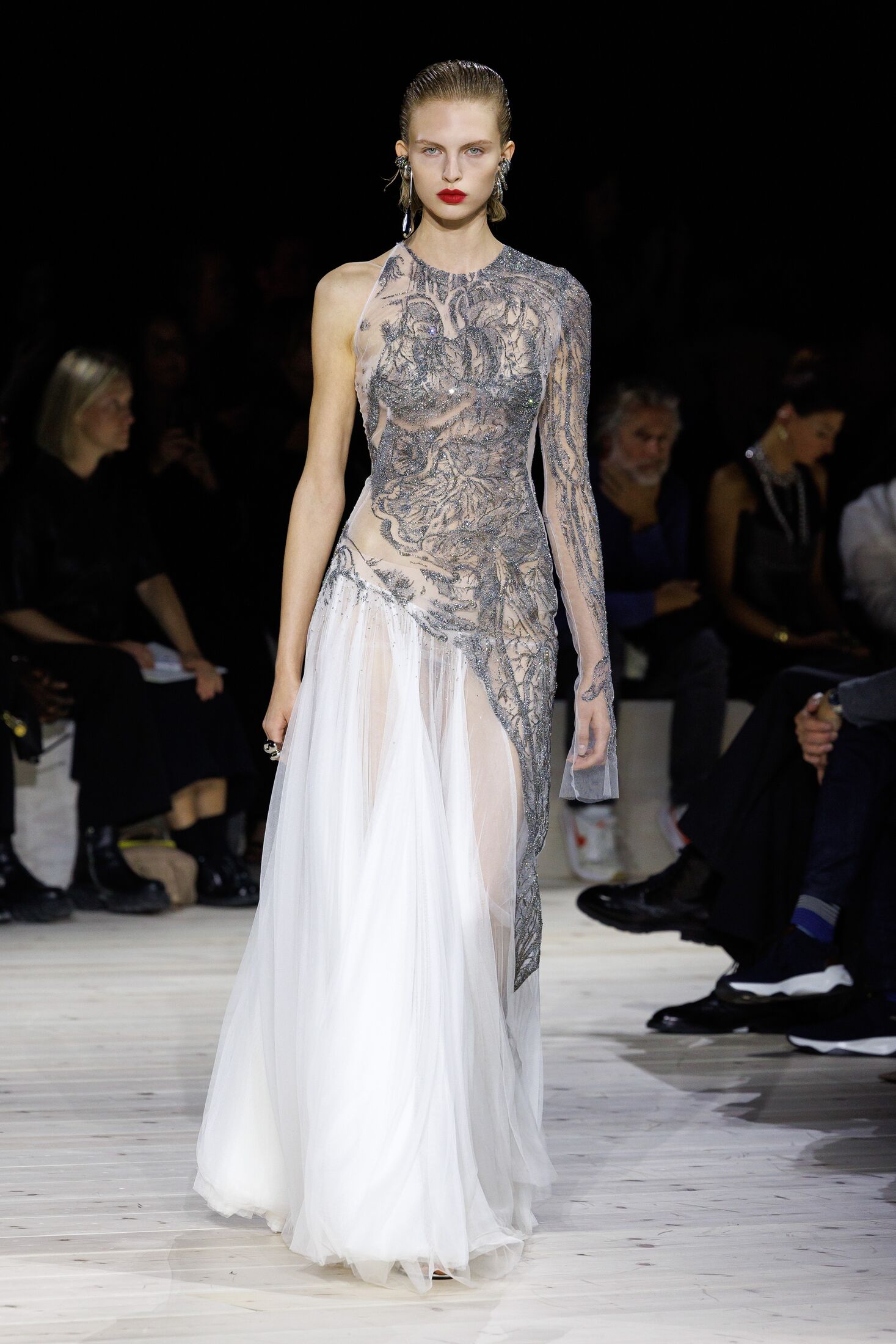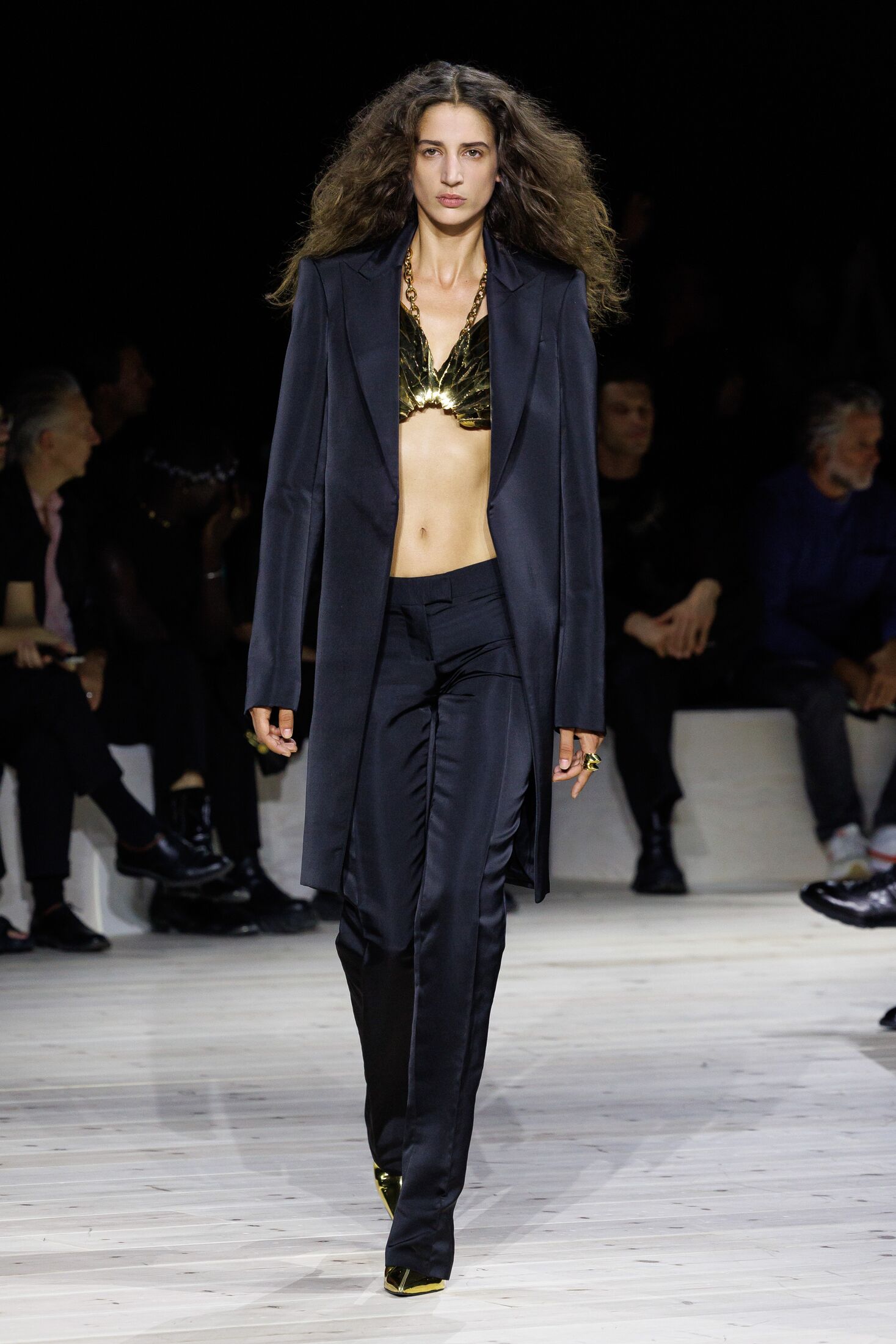The
Autumn/Winter collection presented at the fashion week earlier this year was all about exploring beauty and anatomy. The creative director has taken the forms started here and developed them further in the spring/summer outfits presented a few days ago.
Sarah Burton said farewell to the house with this collection, leaving behind a signature that was lovingly inspired by the founder's legacy, while also articulating her own credo.
Reinterpreting the darkness of the pain that Lee sent down the catwalks, Sarah Burton has created a version of dark fashion infused with the joy of life by integrating the trauma-free, fulfilled vision of life.
The world of black, kept as dominant, has strong shades of vibrant blood red, gold reflecting radiance, white suggesting the possibility of a new beginning and silver symbolising the second half of the cyclical nature of human life.
The spring show was opened by Naomi Campbell, the house's returning model, who was the closing chord of the autumn runway with her over fifty, confident satisfaction.
The delicately placed framing can also be a reference to the new beginning, as Naomi Campbell had a baby over 50, showing that it is always possible to make a big change.
Sarah Burton is making such a change in her professional life: after spending her entire adult life at
Alexander McQueen, she will turn 50 next year and start something new.
ANATOMY II.
“This collection is inspired by female anatomy, Queen Elizabeth I, the blood red rose and Magdalena Abakanowicz, a transgressive and powerfully creative artist who refused ever to compromise her vision. The show is dedicated to the memory of Lee Alexander McQueen, whose wish was always to empower women, and to the passion, talent and loyalty of my team.” – said Burton about the collection.
There are so many messages between the lines...
Queen Elizabeth I never married; the high regard in which she is held is due in part to the fact that one woman alone could rule such a large kingdom.
Sarah Burton's clothes were not only a tribute to the monarch, but also a reference to the torture style of the period, with clothes sliced along the ribs, shoulders and bust. His tailoring is at once savage and cruel, elegant and tasteful.
The make-up has a natural effect. Only the red lipstick stands out, accentuating the blood and rose motifs. The hair is slicked back or left wild, a contrast between the regal tautness and the towering red of fugitives and warriors.

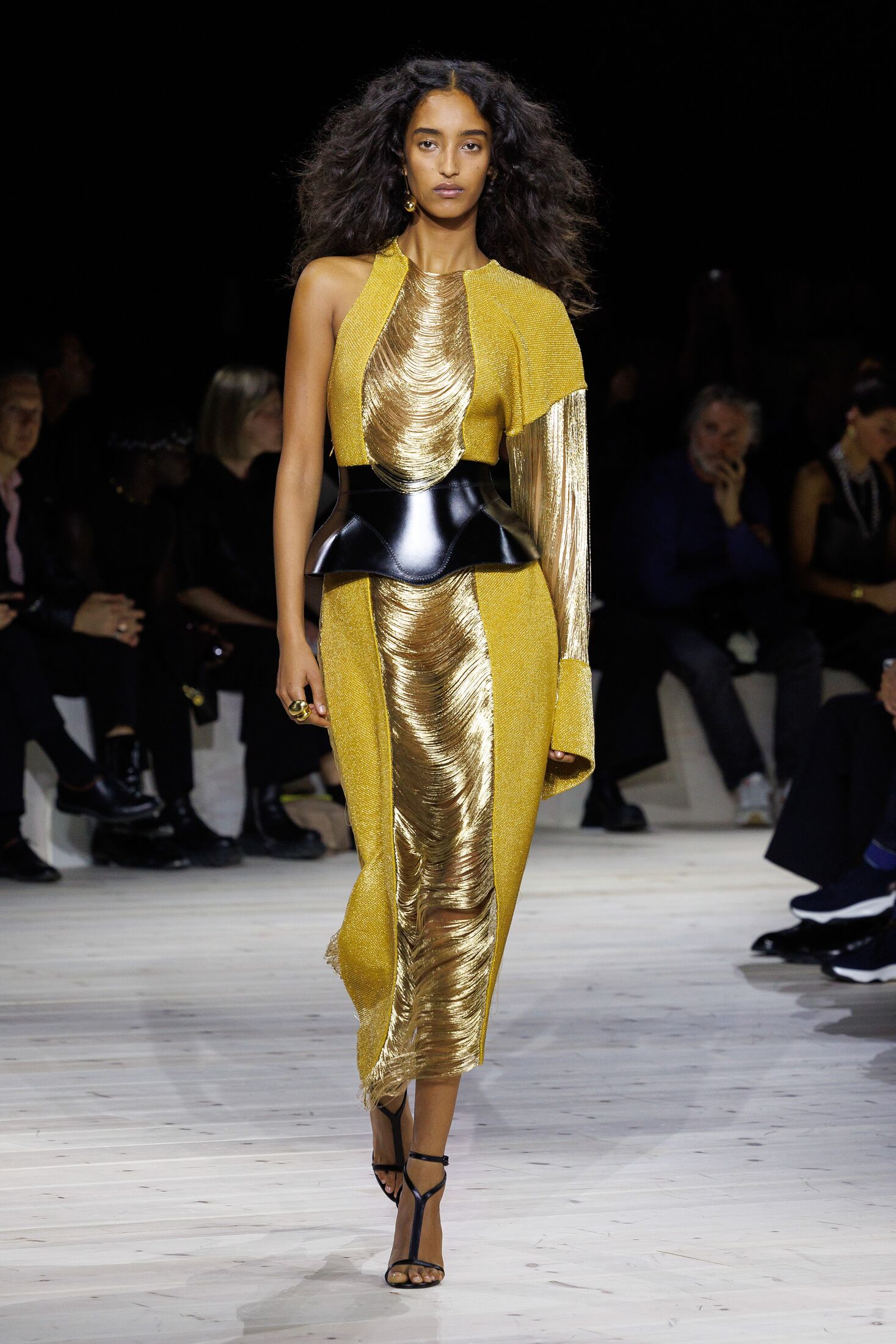
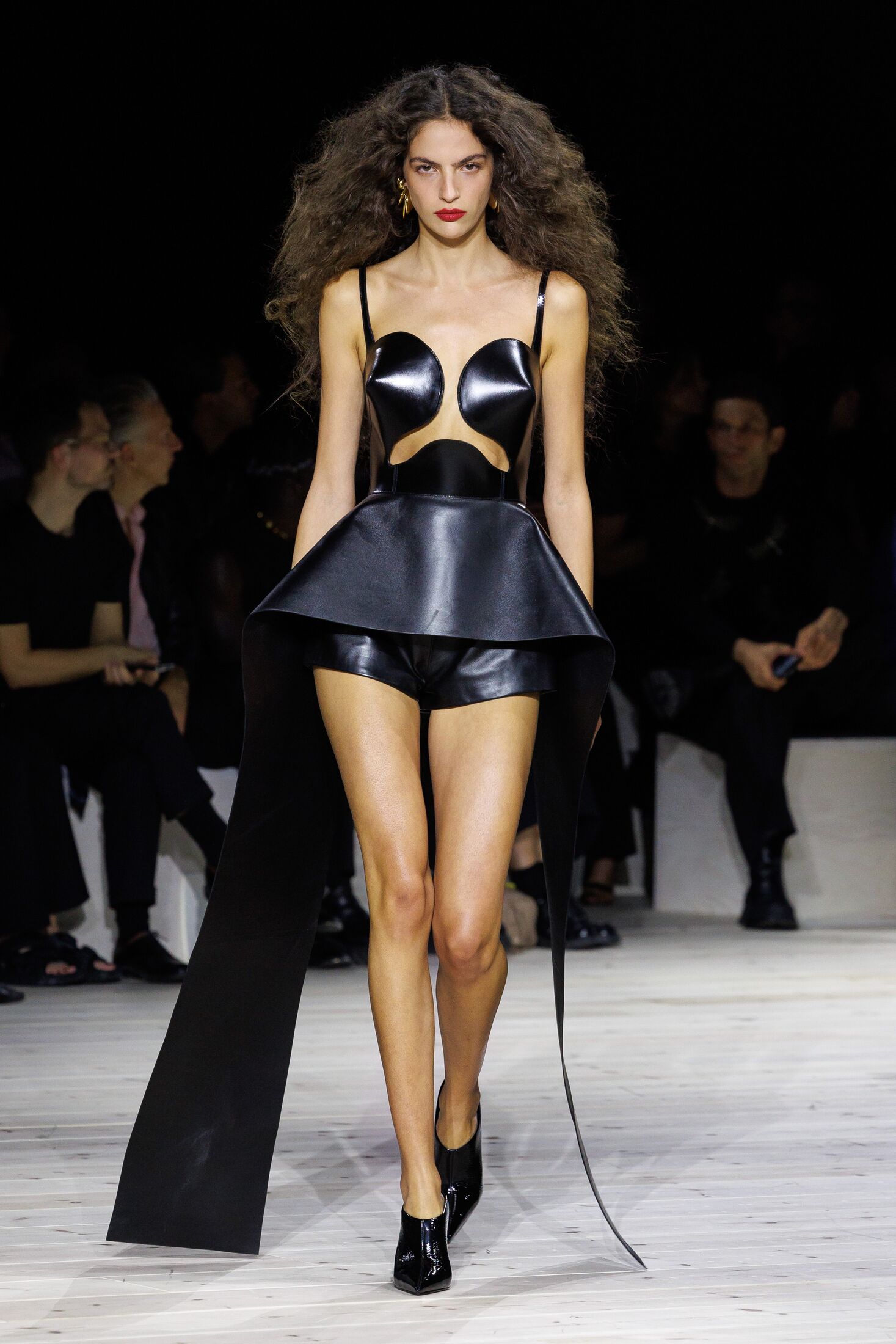
The other inspiration, Magdalena Abakanowicz, has achieved in sculpture what the fashion house is trying to achieve in dressing. The Polish artist radically reinterpreted the traditional framework of textile art when she presented her monumental spatial draperies, called abacans after her surname, in the 1960s. After early abstract works, his interest turned to figurative representation in the 1970s. It was then that he made his first sculptures in burlap and resin. His torsos, with their expressive surfaces evoking injuries and vulnerability, were arranged in monotonous groups or erected as stand-alone sculptures. His figures, often without faces or limbs and in regular, hieratic poses, are, in the artist's words, 'shell-like negative shells of the mass of the human body'.
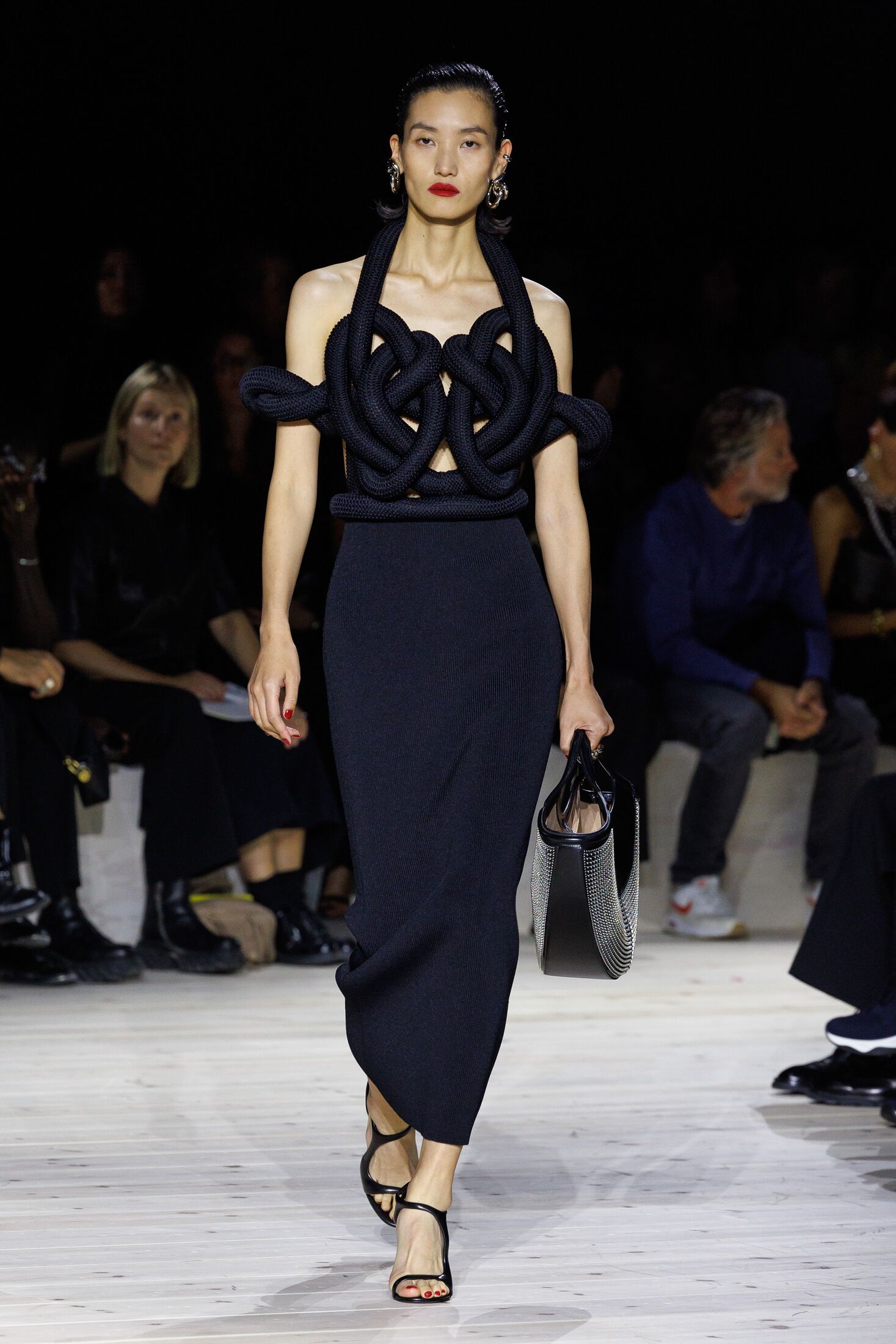


The motif of blood and red roses also evokes Lee's aesthetic of human darkness hurting each other, and the contemporary experience of war and terrorism. It also contains the beauty of the floral motif and is a continuation of the
orchid patterns from the previous collection.
The abstraction that links floral shapes to female body parts continues in the spectacular dresses that take the orchid motif from the previous collection.
In his spring version of autumn knits, Leonardo da Vinci of sweaters drew the bones and guts of the human body through stitches and loops, transforming the softness of the yarn into the most lavish floral shapes. One could contemplate the details for days and still find seemingly indecipherable solutions.
The flower-like anatomical composition appears in the white shapes of a sheer bodysuit and then in a lavish gown adorned with silver and pearl embellishments.
Peplum solutions reminiscent of tailored corsets are combined with embroideries evoking blood vessels and the circulatory system.
A sensuality of vision combined with an artistic elegance.
Every outfit is a poetic line in the farewell letter Sarah Burton sends not only to the fashion house, but also to her previous adult life...
______


